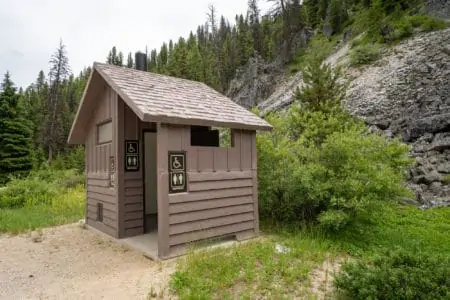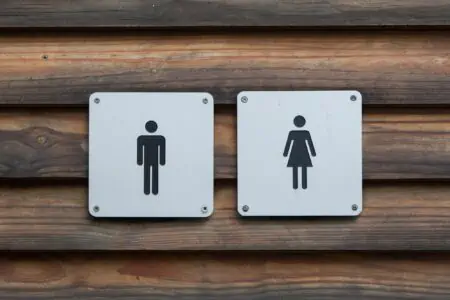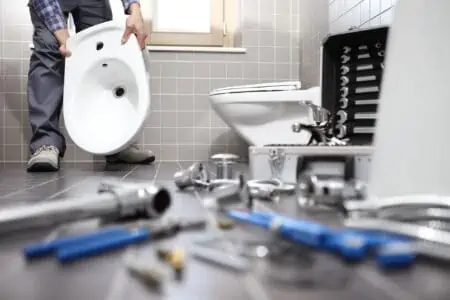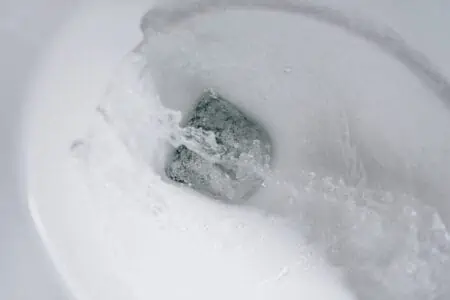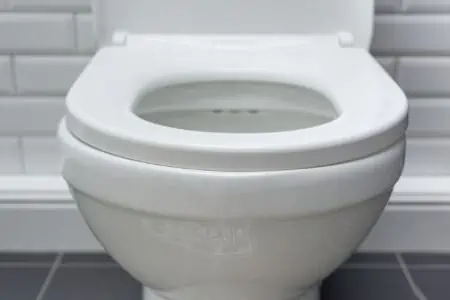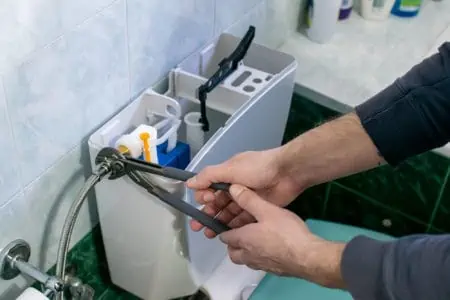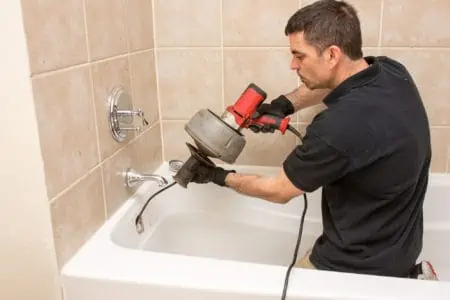Ask anyone who camps, owns an RV, or likes to be in the great outdoors, and they will tell you that when you get a group of them together, the conversation always turns to toilets. One of the most common types in the national parks is a vault toilet.
Not familiar with a vault toilet or even know what they are? We discuss them in great detail, explaining what they are, how they work, and why they are an excellent option for rural areas.
Key Takeaways
- Vault toilets are basic, waterless restrooms found in national parks, campgrounds, and rural areas, consisting of a buried storage tank for waste collection.
- These toilets work by positioning the trapway over the entrance to the tank, allowing gravity to drop waste into the storage area, while a pipe venting system eliminates foul odors.
- Vault toilets do not include sinks or running water, so it’s a good idea to bring hand sanitizer and toilet paper when using them.
- When using a vault toilet, check for critters, avoid throwing trash in the tank, and consider carrying wet wipes to clean the seat before use.
What Is a Vault Toilet?
If you try to imagine an old outhouse behind the cabin in the woods, you would pretty much be describing a vault toilet. They are dry toilets in that they don’t flush or use water of any kind.
The waste material drops through a hole into a storage tank where it sits until the tank is full, and someone comes with a truck and a huge pump to suck out the contents and carry them away. While these toilets may sound a bit back-to-basics, they are more advanced than you might think.
The tanks are usually constructed from polyethylene or concrete, although plastic tanks are more popular because they don’t crack or leak, which meets environmental standards.
Most underground tanks can hold between 750 and 13,000 gallons, depending on where it is and who is using it. Typically, when the vault toilet is full, park services close it off and arrange for it to be emptied.
Where Are Vault Toilets Used?
Most vault toilets are used in parks, trailheads, national parks, and campgrounds. They fit the natural environment well because they use zero electricity, water, and are entirely off-grid. They are usually housed in permanent structures like log cabins and sheds with large vent pipes protruding from the roof or walls.
Vault toilets are not the most inviting spaces. Their design has remained true to the original concept for hundreds of years, with a wooden plank across the trap with a hole and toilet seat. Even the old pioneers of the old west used them.
They really are that basic, so you won’t want to flick through the pages of your favorite magazine while using a vault toilet. They are more of a hop-in, hop-out-type experience.
How Does a Vault Toilet Work?
There isn’t much to explain when it comes to how a vault toilet works. If we said a vault toilet was simply a hole in the ground with a little modesty shed over it, it wouldn’t be far off the mark.
They consist of a tank buried in the ground, with a concrete slab poured over the top with a hole accessed via a trap. The cabin has a door, no electricity or running water, and a covered section with a toilet seat. We are not talking Beverly Hills here, more Beverly HillBillies before they found the Texas Tea.
You place your rear end over the seat, do your business, and it drops into the hole. When the tank is full, a truck comes to suck out the contents to carry it to a waste treatment plant.
Do Vault Toilets Have Sinks?
Vault toilets don’t generally have sinks because they have no running water or electricity to operate water pumps. It might be a good idea to keep some hand sanitizer handy for these little emergencies. Besides, if you love to camp, you are probably not the squeamish type.
Do Vault Toilets Smell?
Vault toilets are odorless to a point, but that largely depends on the weather conditions. The vent pipe channels any foul odors up and away from the cabin. This is a great system if the wind is blowing; however, if there are no breezes, the stench may linger around the toilet.
The US Forest Service conducted research into the best venting systems, and so these vault toilets generally don’t suffer from overpowering stenches. They call it the “sweet-smelling toilet,” and it works by drawing fresh air into the tank while the stack sucks up the toilet smells and filters them away from the toilet.
Sometimes, when the wind is strong enough, it forces the smells back down the vent pipe to circulate inside the tank, which whips up all manner of odors.
How Much Does a Vault Toilet Cost?
You might think the cost of installing a vault toilet is inexpensive. It has no plumbing, electricity, or running water. However, most of the money gets swallowed up by the groundwork.
There is a strong chance that you will need to call in professional help to complete this project, and they will also be expensive, but they will have the necessary equipment.
Digging a pit large enough to take the polyethylene tank requires heavy machinery and that costs. You also need to decide on the type of vent pipe, the level of luxury (if we can call it that), and any other additional costs.
In short, you are probably not going to get much change from $10,000. If you are doing it yourself, the costs drastically reduce, but you also extend the time it takes to get the toilet up and running.
How To Build a Vault Toilet
When you are designing and building a vault toilet, there are a few rules you should observe, following the US Forestry Service guidelines.
- There should only be one vault per individual toilet riser.
- The vault should be black to improve the user experience because you cannot see the contents. Lifting the seat and seeing what’s in there is gross.
- The vault sides need to be sealed to prevent seepage of waste material and to prevent gas from building up inside the vault.
- The vault floor should have a 1-inch per foot slope towards the outside area where the contents are pumped out to ensure all the contents get emptied.
- There should be a 24-inch inspection cover on the side of the building, and it should be airtight and sealed to prevent gasses from escaping or creating an imbalance in the venting system.
- The size of the vault is dictated by the number of users.
- The vault should be no deeper than 5 feet.
- When the vault is emptied, the contractor should have a separate means of connecting the pump and will not perform the pump out through the riser.
Vault Toilet vs. Outhouse
On the surface, vault toilets and outhouses look and feel very similar. Both are located away from your living space, both have vent stacks to deal with odors, and both have the same uninviting interior that is more utility rather than a luxury.
Also, both carry solid and liquid waste to a storage tank buried beneath the surface. But, there are two significant differences: vault toilets have no running water, so there is no flush or wash hand basin, and vault toilets are situated over the tank, whereas outhouses often have water and electricity, and the tank is buried in an area near but not below the main structure.
Top Tips for Using a Vault Toilet
Want some hints and tips on how to survive using a vault toilet? This is the section for you.
Check for Critters and Stinging Insects
Vault toilets are warm and safe environments for furry friends and all manner of bugs, so before you sit down, lift the seat and check for anything that might give you a nasty nip on the posterior. Spiders also like the dark and private spaces, so don’t be surprised if you share the toilet with our 8-legged friends.
Bring Toilet Paper
In many instances, these vault toilets are so basic, they are just a means to relieve yourself in an emergency, so they don’t have toilet paper. Before rushing inside and going, it would be a wise idea to grab your own TP, or you might get caught short.
In the rare event that there is toilet paper, it will most likely be the thinnest one-ply paper, so you might be better using your own anyway.
Don’t Throw Trash
Vault toilets are not trash cans, so if you have rubbish that you’ve collected on your walk, don’t throw it into the vault. Find somewhere appropriate to dispose of it. If the tank gets clogged with debris, it will not pump out, and the toilet will break.
It’s also not a great plan to leave it on the outhouse floor, as this creates the perfect environment to invite unwanted guests. Plus, it isn’t very polite.
Bring Hand Sanitizer
If you care about cleanliness, bring hand sanitizer to keep bacteria at bay. Some vault toilets have wall-mounted sanitizer dispensers, but the vast majority don’t so bring your own.
Keep Your Stuff Safe
Many vault toilets don’t have any secure areas where you can place your belongings, so keep them close by. Some toilets don’t even have lockable doors.
Carry Wet Wipes
If you are a camper, you will be familiar with the convenience of wet wipes, but these aren’t to keep you clean; they are to wipe the toilet seat before using it. Whatever you do, bag the wet wipe and take it with you because they do not biodegrade in the vault and could cause blockages.
